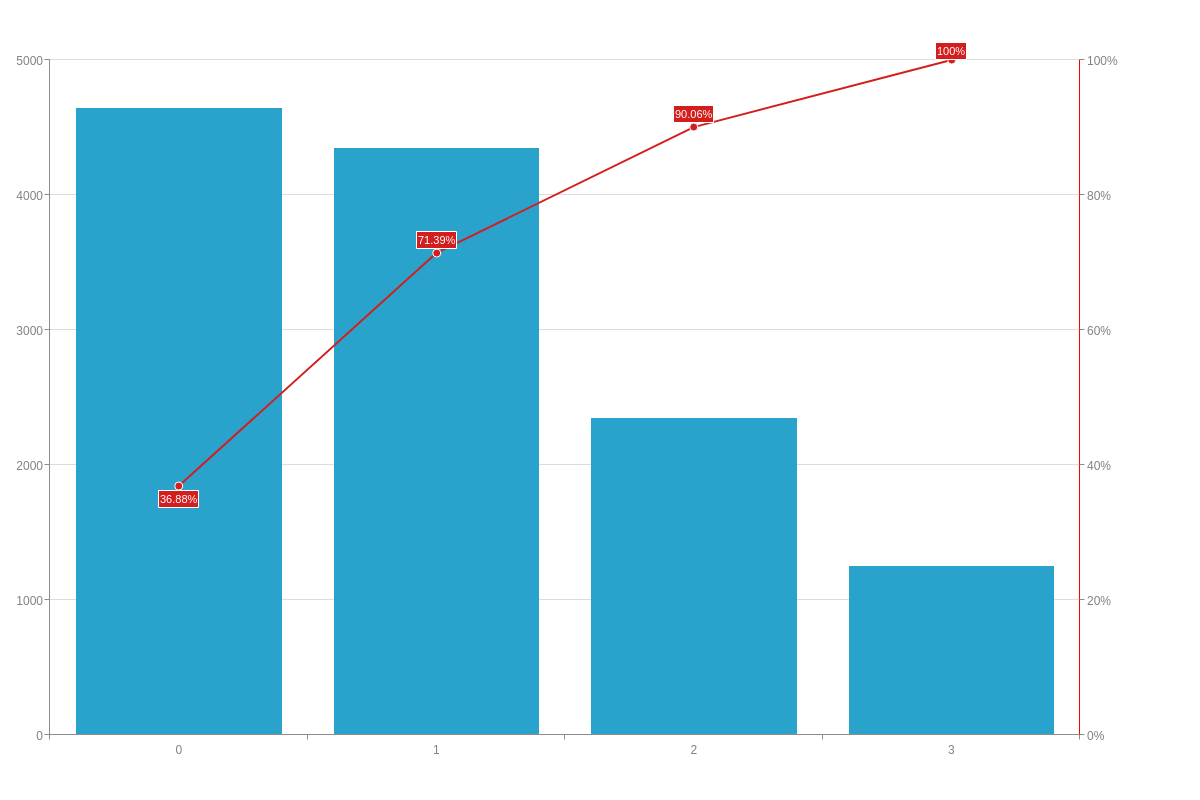Pareto Charts
Note: See our Pareto Chart Gallery for inspiration on all the different pareto chart possibilities.
Pareto Chart Type
Specify the chart type by adding a type attribute to the chart object and setting the value to pareto.
{ type: "pareto", }
Data
To enter data into the pareto chart, use the series array. Each object in the series array requires a values array to function properly. ZingChart will automatically calculate the percentage values for the line plot from this array.
Note: Learn more about the series array with our series JSON Configuration page.
{ type: "pareto", series: [ { values: [464200,434500,235000,125100] } ] }
Chart-Specific Properties
Pareto charts include a number of unique chart-specific properties that allow you to manipulate the appearance and behaviors of your HTML5 pareto chart. Add these properties within an options object.
Pareto Line Plot
The line-plot object sets the definition for the auto-generated line plot.
{ type: "pareto", options: { 'line-plot': { 'line-color': "#f00", 'line-width':4 } } }
Scale-Y-2
The scale-y-2 object sets the definition for the second y-scale (the one associated with the auto-generated line).
{ type: "pareto", options: { 'scale-y-2': { 'line-color': "red", label: { text: "Percentage", 'font-color': "red" }, tick: { 'line-color': "red" }, item: { color: "red" } } } }
